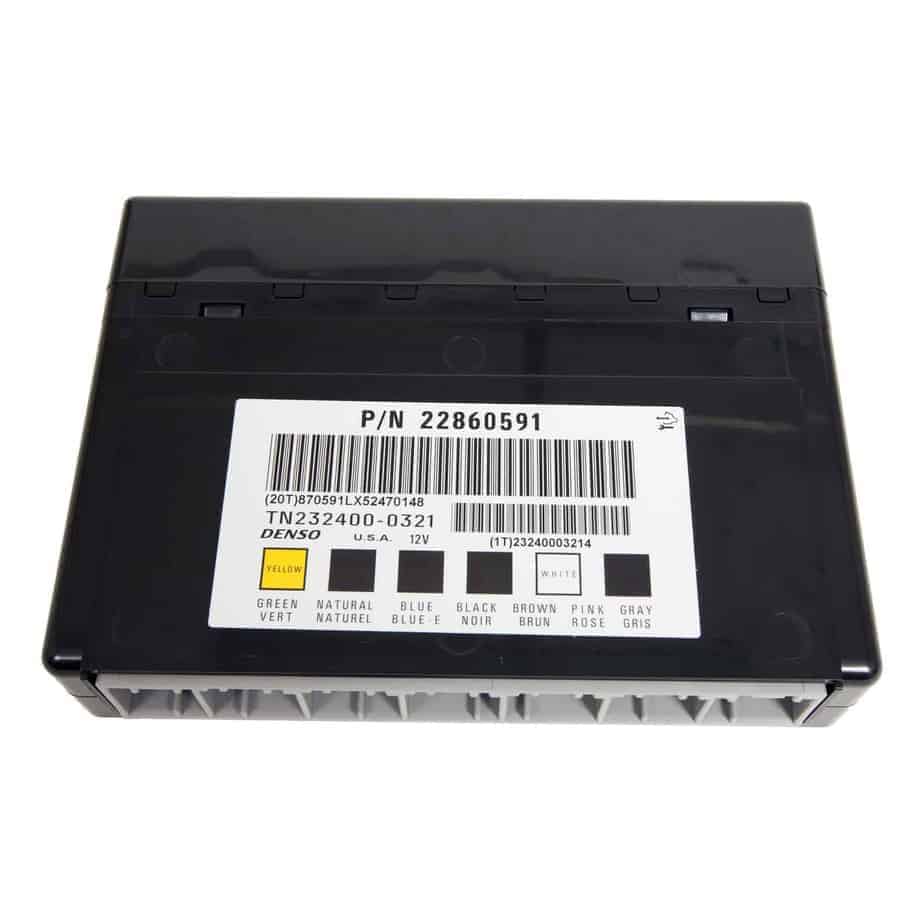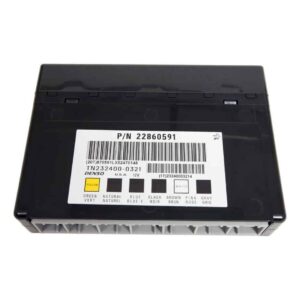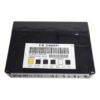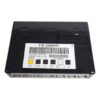Is Your Cadillac Plagued by Electrical Gremlins?
If you’re dealing with flickering lights, a battery that dies for no reason, or power accessories that have a mind of their own, you’re not alone. These frustrating and unpredictable issues often point to a single culprit: a failing Body Control Module (BCM). As the central command center for your vehicle’s electronics, a faulty BCM can wreak havoc on your driving experience. This isn’t just an annoyance; it can affect vehicle security and safety systems. We offer a reliable and straightforward solution with our professionally prepared 2010 STS Body Control Module, designed to restore your car’s functionality and your peace of mind.
A Technician’s Notebook: The DTS That Wouldn’t Cooperate
A customer brought in a Cadillac DTS with a classic BCM failure story. The radio would turn on and off, the security light was flashing, and the power locks worked intermittently. They had already replaced the battery twice. A scan showed multiple ‘U’ codes, indicating communication loss across several modules. In my 20+ years of diagnostics, this pattern almost always leads back to the BCM. After confirming power and ground to the module were good, we identified the internal BCM failure. Swapping it with a pre-programmed unit like this one solved every single issue in one go. It’s a textbook case of how a single component can cause a cascade of seemingly unrelated problems.
Common Signs of a Failing BCM
Your vehicle’s BCM is the brain behind its body electronics. When it starts to fail, you might notice one or more of these symptoms. If these look familiar, a replacement is likely the solution.
- ✔ Intermittent or non-working power windows, door locks, or interior lights.
- ✔ The security system acting erratically or preventing the car from starting.
- ✔ A persistent battery drain that leaves you with a dead battery.
- ✔ Warning lights on the dashboard, such as for the airbag or ABS, that have no other cause.
- ✔ Communication error codes, such as U0140, stored in the system.
- ✔ Horn honking unexpectedly or not working at all.
The Simplest Path to Repair: Our Cloning Service
Forget expensive dealership visits and the hassle of finding a shop with the right programming tools. Our cloning service makes this repair as simple as possible. When you purchase this 2010 STS Body Control Module, you just need to provide us with your vehicle’s VIN. We then transfer all the necessary data from your original module’s software file to this replacement unit. It arrives at your door ready to be installed, already configured for your car’s specific options and security information. Plus, we always return your original module to you—no core charges or complicated return processes.
A Straightforward Guide to Installation
- ✔ Safety First: Always disconnect the negative terminal from your vehicle’s battery before starting any electrical work.
- ✔ Locate the BCM: On the 2010 Cadillac STS, the Body Control Module is typically located in the center dash area. You may need to remove trim panels for access.
- ✔ Disconnect and Remove: Carefully unplug the electrical connectors from the old BCM. Note their orientation. Then, unbolt the module from its mounting bracket.
- ✔ Install the New Module: Mount the new, pre-programmed BCM in the same location. Securely reconnect all electrical connectors.
- ✔ Reconnect Power: Re-attach the negative battery terminal.
- ✔ Perform Final Checks: Start the vehicle and test all body functions—lights, locks, windows, radio, etc.—to ensure everything is working correctly. Refer to the post-installation procedures below if needed.
Important Post-Installation Steps
In some cases, your vehicle may require a few final handshakes between modules after the new BCM is installed. These are standard procedures for many modern vehicles.
- Airbag System Sync: If the airbag light is on after installation, a professional scan tool is needed to perform the ‘Setup SDM Primary Key in BCM’ procedure. This syncs the new BCM with the airbag system.
- Brake Pedal Position Relearn: Some models may require a brake pedal position sensor relearn to ensure brake lights and traction control function as intended.
Disclaimer: Vehicle systems vary. We always recommend consulting a factory service manual or a certified technician if you are unsure about any step.
Verified Vehicle Compatibility
This BCM, part number 95151084, is a direct replacement for a wide range of General Motors vehicles. It is compatible with the original part numbers listed below. Please verify your vehicle’s model and year from the list to ensure proper fitment.
Replaces Part Numbers: 10382479, 15093910, 15276271, 15299986, 15819552, 15828601, 15837419, 15872388, 15872421, 15880684, 15921352, 15921353, 15948438, 15948439, 20815898, 20839063, 20864767, 20864768, 20921435, 20921436, 20935349, 22860591, 25826124, 25826125, 25847588, 25847589, 25892622, 25910474, 25934762, 25934763, 95151084
Frequently Asked Questions
Do I need to send my original BCM to you?
No, you do not need to send your part to us. Our cloning service is performed by programming a replacement module with your vehicle’s information using the VIN you provide at checkout.
Is this part difficult to install for a DIYer?
For someone with basic mechanical skills, the physical installation is straightforward. The main challenge is accessing the BCM, which is usually behind a dash panel. Our pre-programming service eliminates the need for special computer tools, making it much more DIY-friendly.
What happens to my old BCM?
Our service does not require a core return. The customer’s original module is always returned to them along with the programmed replacement unit. We do not keep the core.
Will this fix my check engine light?
A BCM typically controls body functions, not engine performance. If your check engine light is on, you likely have a separate issue with the engine or powertrain control module (PCM/ECM). However, a faulty BCM can sometimes cause communication error codes that may trigger other warning lights.
What if the airbag light comes on after I install it?
This is a known possibility. It simply means the new BCM needs to be electronically introduced to the airbag module (SDM). A repair shop with a professional-grade scan tool can perform the ‘Setup SDM Primary Key in BCM’ procedure to resolve this.



